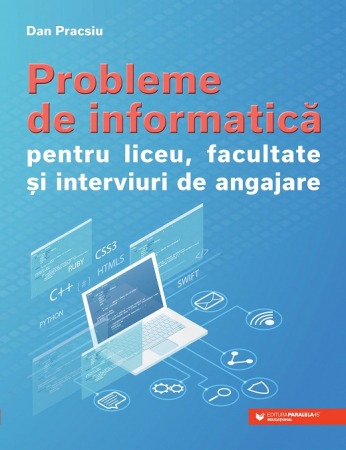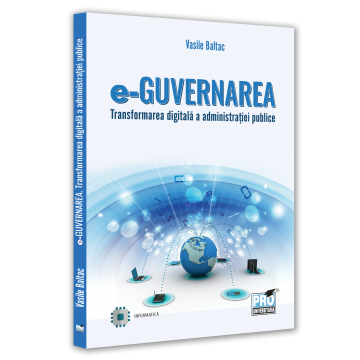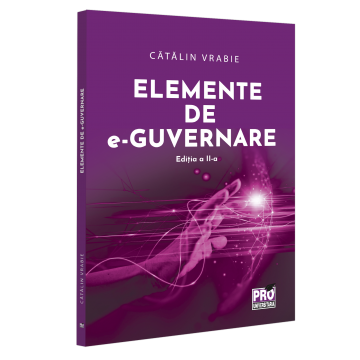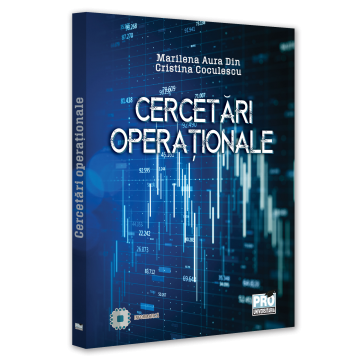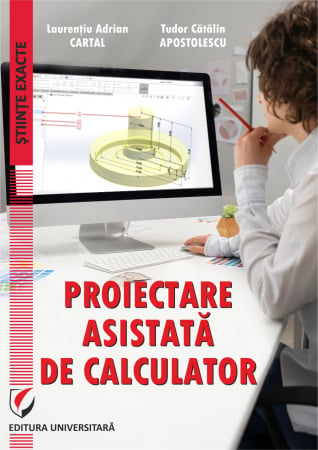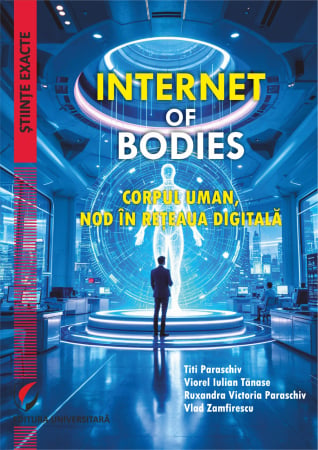Propuneri manuscrise: [email protected]: 0745 204 115
Urmărire comenzi Persoane fizice / Vânzări: 0745 200 357 / Comenzi Persoane juridice: 0721 722 783
ISBN: 978-606-28-0549-4
DOI: 10.5682/9786062805494
Anul publicării: 2017
Ediția: I
Pagini: 152
Editura: Editura Universitară
Autor: Camelia Delcea, Liviu-Adrian Cotfas
- Descriere
- Download (1)
- Cuprins
- Autori
- Review-uri (0)
Designing flexible, efficient and user-friendly mobile tour guide applications is important, both from a commercial and a research point of view. Without any support from a system, a user manually building an itinerary should spend a lot of time prior to the trip searching for information regarding the tourist attractions, reading facts about them and designing possible itineraries by taking into account factors such as opening hours, visiting durations, distances and available means of public transport.
The contributions of the present book are two-fold. From the theoretical point of view, it contributes to the design and development of highly personalized itinerary recommender systems, while from the practical point of view, an approach for building mobile applications using the latest web technologies is proposed and validated.
The first chapter, Introduction, outlines the evolution, current standards and the application areas of Geographic Information Systems. Based on the possibility to identify the user’s location, a new type of applications, called Location Based Services – LBS are becoming increasingly popular. Such applications customize their content based on the user’s geographic position. The evolution of GIS architectures from monolithic systems to distributed web service based architectures is also discussed. The main characteristics of an itinerary recommender system are presented afterwards, as well as a comparison between the system described through this book, called MoTripAssistent, and several other state of the art solutions. The proposed approach uses multi-objective genetic algorithms and collaborative filtering recommendation techniques in order to allow users to build highly personalized touristic itineraries.
The second chapter, Context-Aware Personalized Recommendations, focuses on the approach required for providing relevant touristic attractions suggestions, in accordance with the user’s preferences and context. The context includes aspects, such as the time of the day, the period of the year, weather information and traffic data, that while not directly related to the user, can have a dramatic effect on the perceived utility associated to visiting a particular touristic attraction. A context-aware collaborative filtering recommender algorithm is presented, that takes into consideration both the user’s long-term and the short-term preferences.
The third chapter, Multi-Objective Itinerary Building, discusses the approach required for building the complete itinerary of touristic attractions.
Similar to many other real-world problems, tourists building an itinerary face a multi-objective optimization problem, in which the perceived utility of visiting a particular attraction is only one of the factors. However, most itinerary building approaches only try to maximize the sum of the perceived utilities for the chosen touristic attractions. The algorithm presented in this chapter combines multi-objective genetic algorithms and similarity measures to suggest highly distinct Pareto-optimal itineraries. Advanced heuristics have been used in order to provide solutions in near real-time.
The fourth chapter, Collecting Data using Crowdsourcing, focuses on the particularities of map based collaboration and especially on collecting information regarding touristic attractions using crowdsourcing. Although crowdsourcing offers the premises for easily acquiring large amounts of data, special measures have to be taken in order to assure a high degree of accuracy. The proposed approach combines flexible validation rules and artificial neural networks.
The fifth chapter, Collaborative Solution for Itinerary Recommender Systems, presents the architecture of the proposed itinerary recommender system and the approach used for building the client implementation. A special communication layer was added with the role of facilitating the communication with the client implementations using HTTP requests, Web Service Calls and Socket Connections. Thanks to the multiple communication methods supported by this layer, client side applications can be implemented using a wide array of technologies. The reference client implementation uses the latest web technologies including HTML 5 and Web SQL in order to support a wide array of mobile devices. By adapting to the capabilities of each device, the approach ensures an optimal and intuitive user experience. The resulting application can be either run directly from the browser or can be installed similar to classic native applications using a thin native wrapper.
The sixth chapter, Further Improvements, discusses several recent topics, that could be helpful for readers willing to improve upon the system presented in this book, including how to use semantic-web technologies to provide a common understanding of data between different systems, and how next generation architectures based on automatic and semi-automatic web service composition could be built. A multi-agent framework for web service composition framework that allows users to easily add new functionalities and access external information is described.
The seventh chapter, Conclusions and Future Work, summarizes the results included in the book and also presents possible future developments. In order to validate the theoretic results presented in this thesis, the authors have developed an itinerary recommender system, called MoTripAssistent. The screenshots in this book present the application running either in the emulator or on a mobile device.
This book has been specifically designed and written for a broad audience, including both researchers interested in the field of recommender systems and practitioners willing to either develop a new or to improve an existing itinerary recommender system.
-
Tourism Itinerary Recommender Systems - In the age of personalization and crowdsourcing
Descarcă
Introduction/ 7
1.1. Geographic Information Systems / 9
1.2. Location Based Services /12
1.3. Evolution from Monolithic to Distributed Architectures/ 15
1.4. Itinerary Recommender Systems/ 18
2. Context-Aware Personalized Recommendations/ 22
2.1. Collaborative Filtering Recommendations/ 22
2.2. Context-aware Recommendation Techniques / 26
3. Building Personalized Itineraries /30
3.1. Motivations for multi-objective genetic algorithms /30
3.2. Public Transport Route Finding using Genetic Algorithms /33
3.3. Building Itineraries using Multi-Objective Genetic Algorithms /47
4. Collecting Data using Crowdsourcing/ 53
4.1. Collaboration in Geographic Applications/ 53
4.2. Crowdsourcing Collaboration in GIS / 55
4.3. Assuring Robustness against Attacks in Crowdsourcing/ 60
5. Collaborative Solution for Itinerary Recommender Systems /68
5.1. Web Service Architecture for Itinerary Recommender Systems/ 68
5.2. Mobile Application Development Using Web Technologies/ 76
5.3. Mobile Itinerary Recommender Systems User Interface / 87
6. Further Improvements /106
6.1. Multi-Agent Systems/ 106
6.2. Multi-Agent Web Service Composition Framework /109
6.3. Assuring Reliability in Web Service Composition Applications/ 116
6.4. Geospatial Ontologies/ 119
7. Conclusions and Future Work /125
Bibliography /128
Annexes 1/ 142
Annexes 2/ 146
Annexes 3 / 149
Annexes 4/ 152
Camelia Delcea

6359.png)
![Tourism Itinerary Recommender Systems - In the age of personalization and crowdsourcing [1] Tourism Itinerary Recommender Systems - In the age of personalization and crowdsourcing [1]](https://gomagcdn.ro/domains/editurauniversitara.ro/files/product/large/tourism-itinerary-recommender-systems-in-the-age-of-personalization-and-crowdsourcing-466-104777.jpg)
